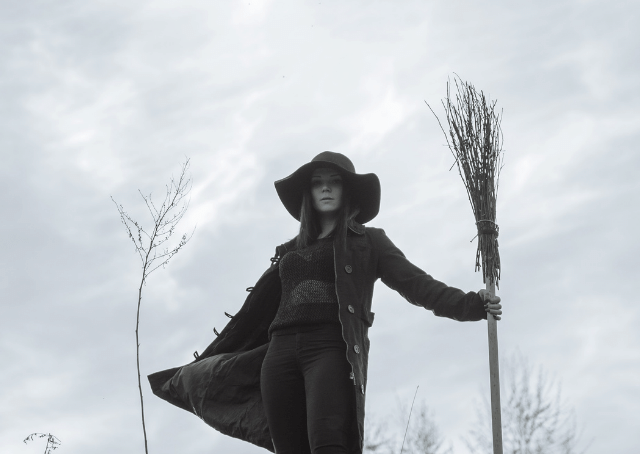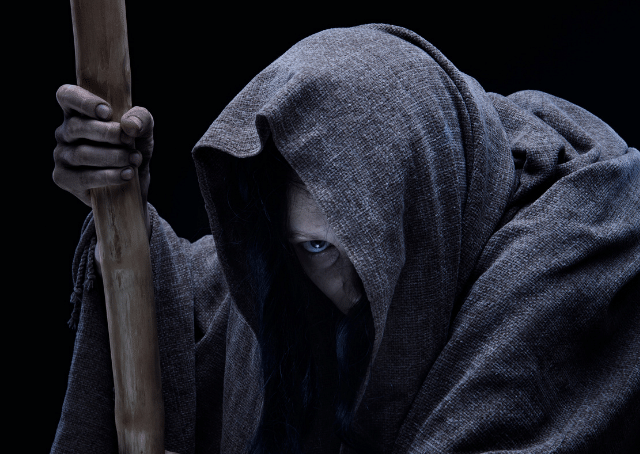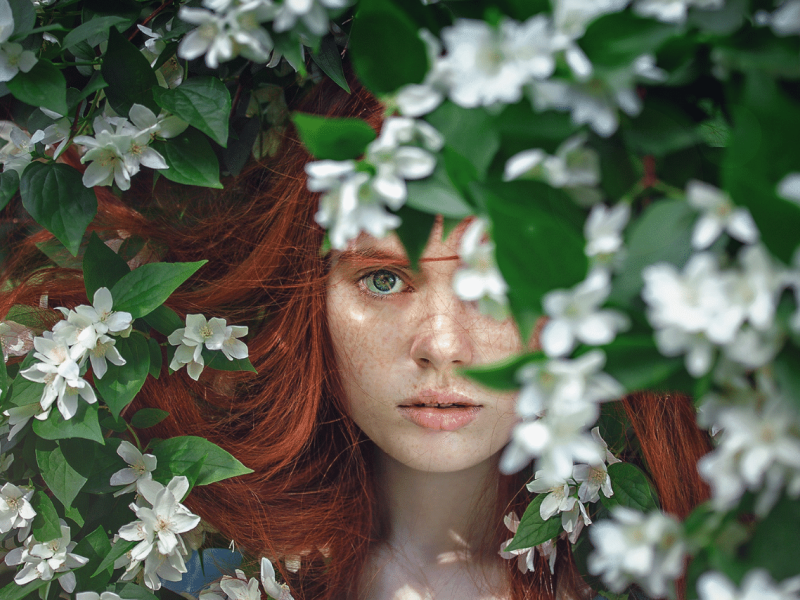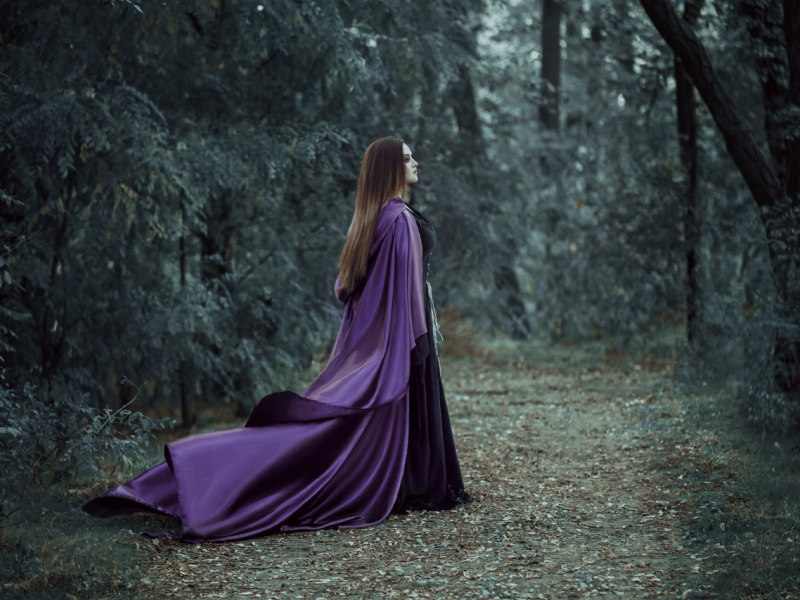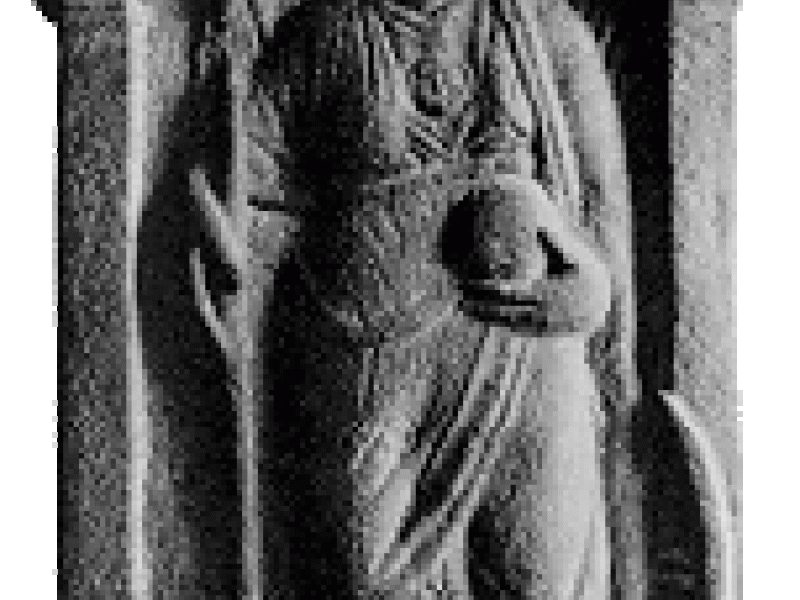Cailleach
Cailleach: The Divine Hag
Cailleach is a goddess of many names and titles, but for the most part, she is a divine hag.
Even her name means “old woman,” and she has the power to handle storms, control winter, and build mountains. Cailleach was known in Ireland, Scotland, and the Isle of Man.
Read on to find out her beginnings, special powers, and just how hag-like she really was.
Who Was Cailleach in Celtic Mythology?
Cailleach was many things. First and foremost, she was often called a hag or old woman that controls winter. Her name in both Scottish and Irish Gaelic literally means old woman. Probably. that is why she has so many other names because any old woman could bear the name “Cailleach.” It could be just her title.
However, Cailleach was a powerful woman, despite her age. She was known as the Queen of Winter. She could decide just how harsh or how long she wanted winter to be.
The people of Ireland, Scotland, and the Isle of Man held her in high esteem. Even for the political power of certain regions, people looked to this goddess for approval. They depended on her choices, and she used her power in whatever way she saw fit.
But despite the power she held, she was also the goddess of grains. She loved and protected animals, even if she didn’t always approve of men.
Attributes of the Goddess of Winter
The Divine Hag is likely the best way to describe her, and she was a fearsome creature to behold. She looked like an old woman, but more than that, she had red teeth, one eye, blue skin, and was often veiled. She could travel over mountains and hills, ride storms, and shapeshift into a bird.
Her attributes varied greatly in the legends and the regions, and she was immortal.
Her age varied as well, and she would sometimes spend half the year as an old woman and half the year as a young woman. This could be a sort of explanation for the summer and winter divide. In Ireland, she went through seven periods of time as a young woman, and then she became old forever. She could only really be called Cailleach, however, when she was old.
Brigid was the goddess of summer; the Celtic goddess also named “The Exalted One.” In Scotland and on the Isle of Man, they believed that once the Celtic year ended on Halloween or October 31st, Cailleach returned to the world. But on May 1st, she turned back into Brigid to mark the start of the warmer seasons.
Cailleach’s Names: A Goddess of Many Titles
It is not unusual for a god and goddess to go by many names and titles. This is true of Celtic mythology, where many groups shared beliefs but not languages.
In the case of Cailleach, she was shared by Scotland, Ireland, and the Manx group on the Isle of Man.
She went by many names, which included:
The Divine Hag
Beira, Queen of Winter
Veiled One
Digde/Digdi
Milucra
Burach
The Storm Hag (Scotland)
The Hag of Beara (Ireland)
Cailleach, a Mother Many Times
Cailleach, because she could move through time and age herself, was able to have many children. In some stories, she would return to her youth to have more children with various men. One of the men that was connected with her was a trickster spirit named Bodach. Together, they had multiple offspring.
For many, she was seen as the old woman ancestor of their people. She had many children and foster children. So the Irish people considered her as the mother of every tribe in the country.
Myths of Cailleach, the Divine Hag
This goddess was beloved by poets and storytellers, so she’s involved in many tales in Celtic mythology. The myths depend on from whence they hail, but many of them are similar and link to each other. Cailleach was an interesting goddess.
Her myths showcase her ability to sort of find a middle between being fully evil and fully good.
Cailleach and the Building of Mountains
One of Cailleach’s symbols was her special hammer, used to form the hills and mountains of the land. In Scottish tales, Cailleach was responsible for the mountains and hills. As she was traveling over the land, she dropped some heavy rocks from her bag. A similar story states that she built them on purpose with her hammer.
That way, she could use them as stepping stones as she walked. Also, in Scotland, Cailleach might be seen as more than one goddess or Cailleachan. These were the storm hags. They had the destructive power of the weather and controlled all the natural elements.
In one story, winter comes off the coast of Scotland because Cailleach is washing her “great plaid.” One can hear the water coming from far away, and then suddenly, the ground is blanketed in white (her plaid).
Cailleach and Imbolc (Old Groundhog Day)
Imbolc was a holiday celebrated across Scotland, Ireland, and the Isle of Man on February 1st. It’s kind of like a fertility festival, celebrating the end of winter and the starting of new life. On February 1st, the people would use Cailleach like the way Americans use a groundhog. Both help to determine the length of winter.
On this day, Cailleach would run out of firewood. So, according to the Manx people, she would shapeshift into a bird and go in search of more wood. The people could tell if she wanted winter to last longer if she made the day lovely and sunny.
The light would help her find more firewood. But if the day was dark and gloomy, that means Cailleach overslept, and winter will be over soon.
Cailleach and Fertility
Another story says that Cailleach, her lover Bodach, and their many children needed shelter. So they sought out the people of Glen Lyon and Glen Cailleach in Scotland to ask for it. The sight of Cailleach can be fearsome to many. But despite that, they were granted shelter by the people in these areas.
The people of Glen Lyon and Glen Cailleach were rewarded for their compassion. As long as Cailleach and her family stayed in the shelter, the land around the area grew very fertile. When she went to leave, she left the helpful people a lovely parting gift.
They could keep their fertile ground forever. However, between May 1st and October 31st, they would need to put up stones for her family.
Rituals for and the Holy Sites of the Celtic Goddess Cailleach
There are a few “holy” sites connected to Cailleach where she might have resided. Even today, these sites have kept their links to Cailleach known.
These included:
Hag’s Head, Cliffs of Moher, Ireland
Ben Cruachan, highest mountain in Scotland
Whirlpool off the Gulf of Corryvreckan, Scotland
Tigh nan Cailleach, (near Glen Lyon and Glen Cailleach), Scotland
The Hag’s Chair on Slieve na Calliagh (the Hag’s Mountain), Ireland
In Glen Lyon and Glen Cailleach, the ritual of laying the stones for Cailleach’s family was repeated to ensure the land’s fertility.
Cailleach and Other Goddesses
There are similar goddesses in other mythological traditions. But Cailleach has remained the most consistent in the mythology.
These other goddesses or divine hags include:
Black Annis: she was a blue-faced hag in Leicester who would eat children
Greco-Roman goddess Gaia: she was a creation goddess
Skadi: Norse goddess of winter and darkness
Holle: Germanic goddess and wife of Wotan of The Wild Hunt, she was a master of the winter’s cold
Baba Yaga: Slavic hag who would both help and hurt, and she would travel over mountains and hills in a hut with chicken legs on it
Cailleach in Pop Culture
The idea of a hag with magical powers linked to the harshness of winter is a very popular figure. Cailleach is no exception and has appeared in various media over the years.
“Dungeons & Dragons” has a similar winter-powerful hag in its mythology. It took on her name and also had blue skin
She made an appearance in the TV show “Merlin”
She was also in the video game Final Fantasy XI as well as the Megami Tensei series
In addition, one can often see this sort of figure in much medieval folklore: the veiled old woman with a fearsome, frightful appearance, who holds great powers in her hands and can hurt or help. You have undoubtedly seen this character in literature and media before
Conclusion
Cailleach was a fascinating character in Celtic mythology, where she played a unique role.
Here’s what we’ve covered in the article:
Cailleach was a sort of winter goddess who could control the cold and storms and took on the appearance of an old woman or hag
Even her name in Scottish and Irish mythology means old woman, so her name could have been more than a title rather than her actual name
She went by many epithets, and they included: The Divine Hag, Digde/Digdi, Burach, The Storm Hag, the Hag of Beira, Queen of Winter, Veiled One, and more!
This goddess was revered and respected in Scotland, Ireland, and the Isle of Man. Her myths varied depending on from whence they hailed
She had the appearance of an old woman even though sometimes she might have transformed into a young woman for various parts of the year
Her transformation could be related to the change between summer and winter. She was the winter goddess, and the summer goddess was Brigid
Cailleach controlled the area from October 31st (end of the Celtic year) until May 1st. Then she either turned into Brigid or switched places with Brigid
Cailleach had blue skin, one eye, red teeth, could walk over hills and mountains, and she could shapeshift into a bird
Cailleach had a big family. Her most famous lover was Bodach, and together they had many children. In Ireland, she was considered the great ancestor and mother to all the tribes and people of the country
Cailleach had a special hammer that she might have used to create the hills and mountains. In the Scottish stories, the hills and mountains could also have come from when rocks dropped from Cailleach’s bag as she traveled over the land
This goddess was in charge of deciding how long winter should last. On Imbolc, on February 1st, she would change into a bird and go out in search of firewood
If winter would last longer, the day would be bright and sunny, so that she could easily search
If it was gray, that meant she overslept, and winter would be over soon. This was not unlike the Groundhog Day celebration in the United States
Another myth stated that she and her family arrived in Glen Lyon and Glen Cailleach in Scotland and asked for shelter. They gave it to her, and she made the lands around the glen very fertile
Before she left, she told the people there that the land would always stay fertile. But they would put stones up for her and her family each year between May 1st and October 31st
They agreed, and the ritual was completed each year
Some holy sites for Cailleach include: Hag’s Head, Cliffs of Moher, Ireland; Ben Cruachan, highest mountain in Scotland; and The Hag’s Chair on Slieve na Calliagh (the Hag’s Mountain), Ireland
Some other goddesses are very similar to the goddess of winter. These include Gaia, Black Annis, Skadi, Holle, and most especially, Baba Yaga, of the Slavic tradition
Cailleach lives on in various media in pop culture, one of them being a magical, winter-focused hag in the game “Dungeons & Dragons”
Cailleach is not a unique figure to us, for we’ve seen her likeness repeatedly in literature from other cultures.
In the case of Celtic mythology, she was both feared and revered, and the people held her in high esteem, garnering her good opinion for who would take over leadership of clans and the like.
However, Cailleach is a woman all unto herself, for she does as she pleases, has the power of the weather, and wanders the earth, climbing hills and mountains. It is a power to be respected and, in our day and age, envied.
